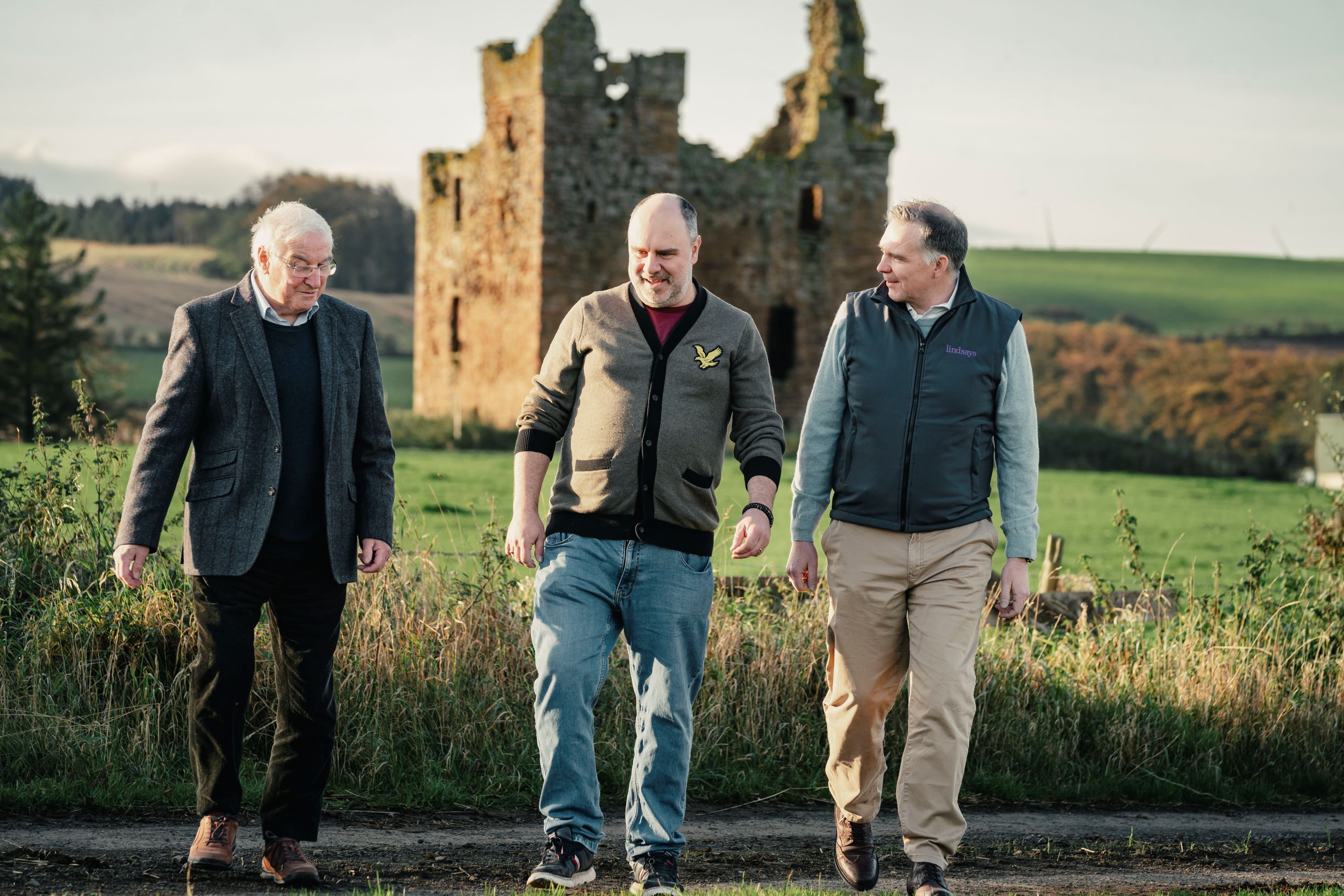Lindsays are proud to have played a pivotal role in the sale of Baltersan Castle, an iconic piece of Scotland’s heritage located in South Ayrshire. Our Corporate team, led by Partner Nicholas Howie, advised the seller, James Brown, in this significant transaction, helping to secure the future of this 440-year-old landmark.
The sale highlights the growing global interest in preserving Scotland’s historic landmarks. Nicholas reflected:
“Selling a castle like this is pretty special. Its physical state and historic worth make it very difficult to value financially, but we found a shared passion and meeting of minds between the seller, James Brown, and the buyer, Angelo Ovidi.
“The vision for restoration is an ambitious one – and clearly, a lot needs to be done. But with the right sort of finance behind it, this could turn out to be an incredibly rewarding investment if Baltersan can be brought back to life.
“We see people from all over the world interested in landmarks like this. There is a real market for investing in a slice of Scottish history.”
A vision of restoration
Baltersan Castle has lain abandoned since the mid-18th century and is thought to have inspired architect and designer Charles Rennie Mackintosh. Its rich history includes visits from poets Robert Burns and John Keats, and it was even featured in a pitch to investors on Dragons’ Den. Now, under the stewardship of Italian computer engineer Angelo Ovidi, Baltersan’s future is filled with possibility.
Angelo’s ambitious plans involve restoring the castle as a hub for creativity, featuring a music school and an arts venue. His vision is supported by a food and drink brand inspired by the castle’s image, which will help fund the restoration while supporting the local community. Speaking about his plans, Angelo said:
“This is a fantastic place, and I am excited to become its custodian. Baltersan has so much history, and I am sure we can use that as a brand to generate income through local produce to both protect the castle’s future and support the local community.
“It is not impossible for us to restore this property if everything goes to plan, although I am trying to keep my feet on the ground. Restoration can be done in different stages. The first is to make the castle stable, then fix the bigger problems. I am keen to work with Scottish specialists, including stonemasons, to do all of this.”
The estimated cost of full restoration is up to £2 million.
A legacy of dedication
James Brown, the previous owner, spent over 30 years preserving Baltersan and attracting interest in its revival. During his tenure, James secured planning permission and even financial backing for restoration plans, though the 2008 global financial crash hindered progress.
Passing the castle on to Angelo was bittersweet for James, but he is optimistic about its future:
“I am so pleased to have found a new custodian, someone who appreciates its history and can continue the work we have started. I do think this building is going to be saved.”
Angelo, who describes James as a “hero” for his years of dedication, expressed gratitude for the groundwork laid:
“Without James’ work, none of what I now hope to achieve would be possible. There is a lot of hard work ahead, but I believe we can do big things here. The history of the place can support a real business opportunity, which, in turn, can support the restoration of Baltersan.”
Baltersan Castle: history and facts
- Built in 1584, Baltersan Castle is a five-storey example of Scottish post-Reformation tower-house architecture.
- It was constructed by John Kennedy of Pennyglen, a bonnet laird with connections to the Kennedy families of Culzean and Cassillis.
- The castle’s unique features include a split-level hall, a rhomboidal oriel window, sliding-shutter slots, and a secret chamber.
- Charles Rennie Mackintosh sketched Baltersan in 1895, and it influenced his designs for the Glasgow School of Art.
- Poet John Keats recorded a visit in 1818, and Robert Burns is said to have played in the ruins as a child.

From left to right: James Brown, Angelo Ovidi and Nicholas Howie
Published 17 November 2024






